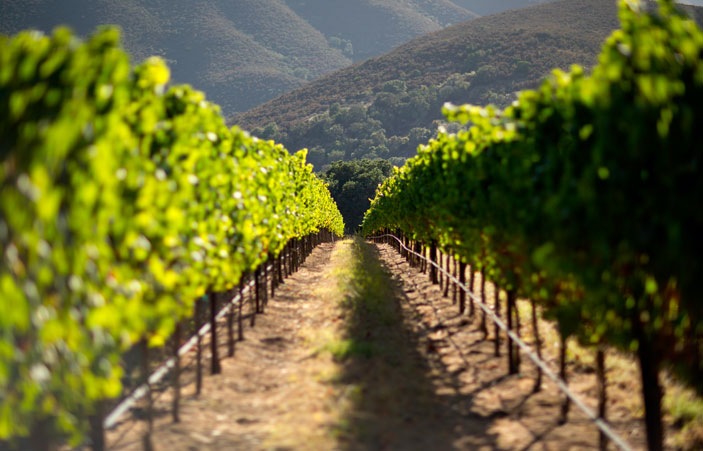With the wines in her glass and the winemakers live on her laptop, Amanda Barnes is virtually transported to California in the inaugural session of the Circle’s new series of wet webinars.
Kicking off The Circle’s first ‘Let’s Taste…’ talk series last month, a trio of California vintners took the hot seat, sharing their Cabernet Sauvignon blends last month. As the most planted and most revered variety in California, Cabernet Sauvignon is certainly the star, but is by no means one-dimensional in expression, as this tasting with three very different wines and wine producers proved. The event was sponsored by the California Wine Institute and was the follow-up to December’s ‘Let’s Talk about California CAB: Cabernet, AVAs and Blends’.
Adam LaZarre of Gladiator Wines started the tasting with his Cycles Gladiator Cabernet Sauvignon, which takes in fruit from three regions of California and offers an overview of California Cab in an approachable, easy-drinking style. “I’m looking to make a wine that’s going to be great at a wine bar and be really accessible early on, while showing all the benchmark characteristics of Cabernet,” he explained over Zoom to 35 Circle members.
In order to get those benchmark characteristics, he blends the structure afforded by Mendocino with the breadth of Paso Robles and uses Lodi to “fatten it up and make the wine accessible early on”. He also blends in a small amount of Merlot (9%) and Petit Verdot (4%) with Cabernet Sauvignon from all these three regions too (meaning that there are nine elements in all) in order to have a more complete wine, and the result is a very supple, smooth and easy-drinking wine with black forest gateaux-style layers of black cherries, chocolate, kirsch and a creamy finish. A crowd-pleasing wine for sure, and a pleasantly affordable introduction to California Cabernet Sauvignon at around £14.
Megan McCollough of Smith & Hook was also presenting a blend of AVAs, although this time from five AVAs in California and 100% Cabernet Sauvignon. As we tasted the wine, she deconstructed the components for us: San Benito, which is “a really unique AVA because it is really hot but really windy”; Arroyo Seco, which has well-draining soils and “gives the backbone to the wine”; San Antonio, which is a rather hot region giving the rich plum and currant flavours; Hames Valley, which is also a warmer AVA offering intense, bold fruit flavours; and lastly Paso Robles, which “gives you a striking black cherry note and soft tannins”.
The blend certainly combined structure and backbone with sweet fruit and succulence. Filled with notes of black cherry, caramel, coffee and cinnamon, it was perhaps the most showy of the wines and embraced a bold New World style and sidled into the more premium spectrum at around £30 a bottle.
Lastly, it was the turn of Robert Donnell of micro-winery Trail 3150, to paint his picture of California Cabernet and his wine focuses solely on their 8-acre vineyard in the Oak Knoll AVA. He described it as one of the cooler AVAs of Napa, which benefits from the fog seeping in from the bay, where temperatures can be some 10°F lower than in higher parts of the valley in summer. “It is like driving into a lake of fog when you arrive, it’s spectacular!” he shared. “It’s cooler here but you get good ripening too, so we can grow everything from Zinfandel to Pinot Noir and Chardonnay in Oak Knoll.”
In their vineyard blend, it was actually Malbec and Merlot that they chose to marry with Cabernet Sauvignon (in an equal proportion of one-third each). The Cabernet certainly gave the wine its structure, which was softened by four years in the bottle (Vintage 2016), while the Malbec brought bright floral perfume and blueberry notes and the Merlot offered warming red fruit notes. A rich but supple wine which delivers nicely for its £26 price point.
With a gamut of expressions in all three wines, the tasting certainly proved that when it comes to California’s Cabernet Sauvignon, there’s plenty to explore.
Upcoming ‘Let’s Taste…’ talks will be sent to members by email.

